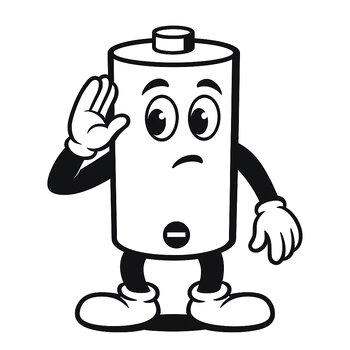- Tips
- technology
- Frequently Asked Questions
- Tests
- mAh capacity
- Rated Capacity
- comparison
- everActive
- Batteries vs rechargeable batteries
- Durability of rechargeable batteries
- Efficiency of rechargeable batteries
- battery voltage
- Accumulated energy
- LR03 AAA
- LR6 AA
- eneloop
- AG13 LR1154 LR44
- CR 2032
- Delta V
- Charge Cycles
- internal resistance
- charge level
- memory effect
- accredited test
- SR44 357
- Hearing Batteries 675
- SR626 377
- Watch Batteries
- Polarity
- Mah
- passivation
- LS 14250
- LS 14500
Zinc-air batteries vs rechargeable batteries – which solution to choose for your hearing aid?

Technological developments mean that hearing aids are increasingly benefiting from various improvements. Such devices can be very effective in improving the quality of life of people with hearing problems. When choosing them, you should pay attention to various technical aspects, such as the method of power supply. Currently, both zinc-air battery-powered hearing aids and rechargeable models are very popular. The choice between them should depend on various factors that you should keep in mind before making a decision.
Hearing aids powered by zinc-air batteries
Today, battery hearing aids are still more common, due to their significant advantages. Such devices provide users with a high degree of independence, as they do not require the availability of a power outlet for charging. Battery hearing aids are especially recommended for active people who travel a lot and value mobility. The advantages of these devices also include the simplicity of use. Hearing aid batteries can be replaced easily and quickly, as the whole process does not require complex technical knowledge. A sufficiently long operating time is also important, thanks to which you can gain uninterrupted operation of the device. Hearing aids powered by zinc-air batteries are also usually relatively economical – especially in terms of purchase costs.
Applicable Battery Type
There are different standard types of hearing aid batteries available today, marked with a corresponding number and color. The hearing aid batteries 10 are yellow. Due to their small size and lightness, they are used in relatively small and discreet devices. They are a perfect fit for hearing aids worn behind the ear or hidden in the ear canal. Small devices still use batteries more often, as the use of a very small battery size is still a technological challenge. The batteries for hearing aids 13 are orange and slightly larger than 10, which translates into higher capacity and longer life. These products are suitable for devices with higher power requirements, such as models with noise cancellation. The batteries for the 312 hearing aids are brown. Their advantage is the optimal balance between small size and high service life and performance. Blue is the 675 hearing aid batteries, which are the most capacious and largest. Their use works well for devices with high power and operating for a long time, e.g. many behind-the-ear models. In this type of device, we will most often also find battery-powered replacements. In summary, we distinguish the following types of hearing aid batteries:
- 10 batteries (yellow) – the smallest, used in lightweight, discreet in-ear and behind-the-ear hearing aids.
- 312 batteries (brown) – combine small size with good performance, work well in most popular models.
- 13 (orange) batteries – larger, higher capacity, often used in cameras with additional functions such as noise reduction.
- 675 batteries (blue) – the largest and most capacious, designed for high-power hearing aids with a long operating time, e.g. behind-the-ear implants.
Application of battery models
For battery-powered models, the device is designed for regular charging, which is associated with many advantages. Batteries are primarily a more ecological solution, due to the lack of the need to systematically replace batteries and accumulate excessive waste. This option also contributes to financial savings, as it eliminates the need to periodically purchase new power sources. The process of replenishing energy in the battery is very simple in itself, and the operating time on one cycle is optimally long. However, for many users, it can be problematic to remember to charge their hearing aids regularly, which is especially important for the elderly. It is also worth bearing in mind the risk of sudden loss of power of the camera in an unforeseen situation, e.g. while traveling. Lack of access to an outlet and charger is then a major difficulty.
Choosing the optimal solution
The choice between devices powered by zinc-air batteries and a rechargeable battery is largely an individual matter. Battery devices provide greater energy independence and mobility, as well as lower costs for the purchase of the camera itself. However, their choice is associated with the need to incur regular expenses throughout the entire life cycle. Rechargeable hearing aids are more environmentally friendly - they eliminate the need to systematically purchase new batteries. However, their use requires appropriate attention and planning, due to the need for cyclical charging. All this means that the way you power your hearing aid is best suited to your personal preferences, habits and lifestyle.